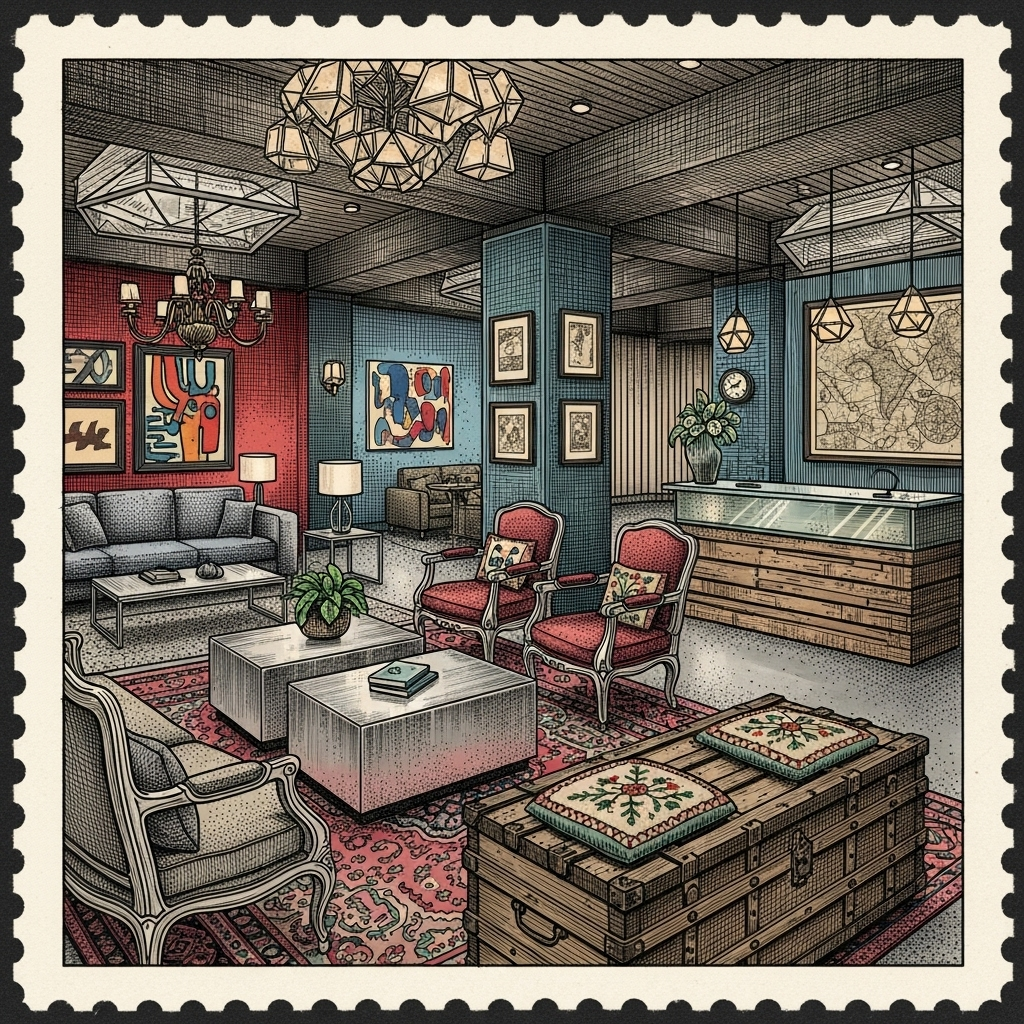The most memorable hotels achieve a delicate balance — spaces that feel both contemporary and timeless. One of the most effective ways to create this harmony is by blending modern and antique furniture. At Hicks Furniture, this design philosophy is rooted in craftsmanship and psychology. The interplay between eras not only defines visual character but also influences how guests perceive comfort, authenticity, and belonging.
The Psychology of Mixed-Era Interiors
Human perception of space is shaped by emotion as much as aesthetics. Studies in environmental psychology show that guests are more likely to describe mixed-style interiors as “authentic,” “warm,” and “memorable” compared to purely modern or traditional ones (Liu & Jang, 2009). Antique furniture conveys history and craftsmanship; modern design introduces clarity and simplicity. Together, they create cognitive contrast — the sense of surprise and familiarity that enhances emotional connection.
In hospitality design, this emotional resonance translates directly into brand value. Guests who feel connected to a space are more likely to remember the experience and associate it with quality and care.
Balancing Character and Clarity
Blending old and new requires balance. Too many antique elements can make a space feel heavy or nostalgic, while overly minimal interiors risk feeling impersonal. Hicks Furniture approaches this balance through proportion, texture, and tone.
An antique sideboard or vintage armchair might anchor a room, while sleek contemporary tables and joinery provide lightness and rhythm. Repetition of materials — such as walnut or brass — ensures visual continuity. Lighting plays an essential role, softening contrasts and highlighting craftsmanship details that might otherwise go unnoticed.
Authenticity as a Design Value
Modern travelers increasingly seek authenticity over uniformity. Research in hospitality branding confirms that perceived authenticity contributes strongly to satisfaction and loyalty (Kolar & Zabkar, 2010). Incorporating antique pieces, or newly crafted furniture inspired by heritage design, gives each property a distinctive narrative.
Hicks Furniture leverages its historical archive of joinery styles to reinterpret classic Irish and European motifs for modern interiors — preserving heritage while aligning with contemporary function. Each project becomes a dialogue between generations of craftsmanship.
Enhancing Comfort Through Familiarity
Antique furniture carries sensory qualities that evoke comfort — the tactile warmth of aged wood, the visual depth of patina, the proportion shaped by hand rather than machine. When combined with modern ergonomics and contract-grade durability, these cues create spaces that feel both elegant and welcoming.
Guests subconsciously associate traditional detailing with care and authenticity. When that familiarity meets modern functionality, the result is psychological comfort — a sense of being in a place that feels human and enduring.
The Designer’s Framework: Function, Form, and Feel
Hicks Furniture collaborates with designers using a framework that balances function, form, and feel.
- Function: Each piece must support operational needs, traffic flow, and durability standards for hospitality environments.
- Form: Proportion, scale, and finish are selected to complement both historical and modern elements.
- Feel: The final arrangement must evoke harmony, not contrast for contrast’s sake.
By aligning these principles, Hicks ensures that mixed-era interiors remain cohesive, practical, and emotionally resonant.
Case Context: The Irish Heritage Influence
Ireland’s design heritage provides a natural foundation for this approach. Georgian and mid-century influences coexist in many Irish buildings, making the blend of antique and modern furniture not only aesthetically appealing but contextually authentic. Hicks Furniture’s experience in restoration and bespoke manufacturing allows it to re-create period details with modern methods — combining character with consistency across large-scale hospitality projects.
Sustainability and Reuse
Integrating antique furniture is inherently sustainable. Reusing or restoring quality pieces reduces material waste and celebrates longevity. Where restoration is not possible, Hicks manufactures reproductions using FSC-certified hardwoods and low-VOC finishes, ensuring that sustainability aligns with heritage. Blending eras thus supports both environmental and cultural preservation.
How Guests Experience Timelessness
Guests may not consciously analyse furniture style, but they feel its effect. Mixed-era design generates psychological richness — a sense of layered experience. According to design psychology studies, environments that blend historical and contemporary cues increase perceived sophistication and comfort, enhancing brand identity and repeat visitation (Gorn et al., 2018).
For hotel developers and designers, this approach offers differentiation. For guests, it delivers emotion — a sense of place that transcends trends.
Bridging Heritage and Modernity
From antique-inspired detailing to minimalist joinery, Hicks Furniture unites history with innovation. Each commission is crafted in Dublin with the same principles that guided the company’s founders over a century ago: material integrity, proportion, and longevity.
Blending modern and antique is not about contrast, but connection — between generations of craftsmanship, between memory and modernity, and between the guest and the space itself.
References
Gorn, G. J., Chattopadhyay, A., Yi, T., & Dahl, D. W. (2018). Effects of visual harmony on consumer responses to mixed design styles. Journal of Consumer Research, 45(1), 99–115. https://doi.org/10.1093/jcr/ucx122
Kolar, T., & Zabkar, V. (2010). A consumer-based model of authenticity: An integrative approach to tourism and hospitality experiences. Tourism Management, 31(5), 713–726. https://doi.org/10.1016/j.tourman.2009.10.001
Liu, Y., & Jang, S. (2009). The effects of dining atmospherics: An extended Mehrabian–Russell model. International Journal of Hospitality Management, 28(4), 494–503. https://doi.org/10.1016/j.ijhm.2009.01.002





